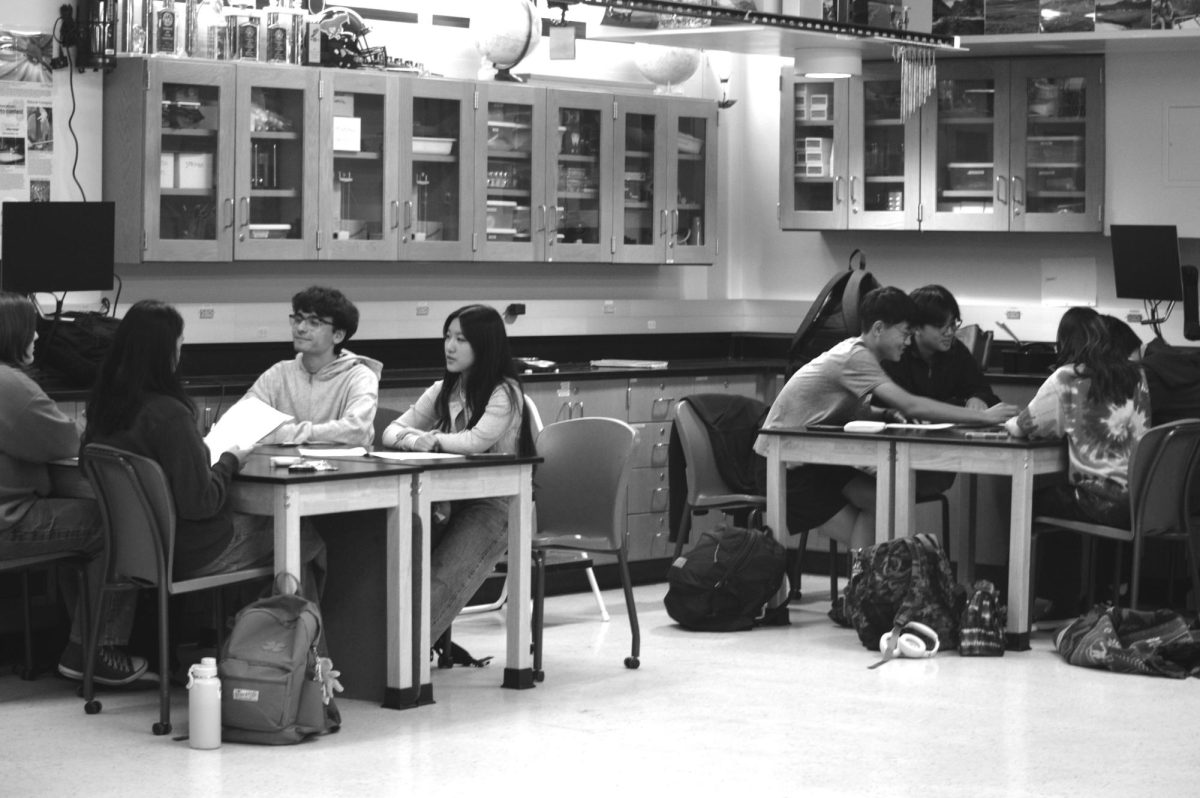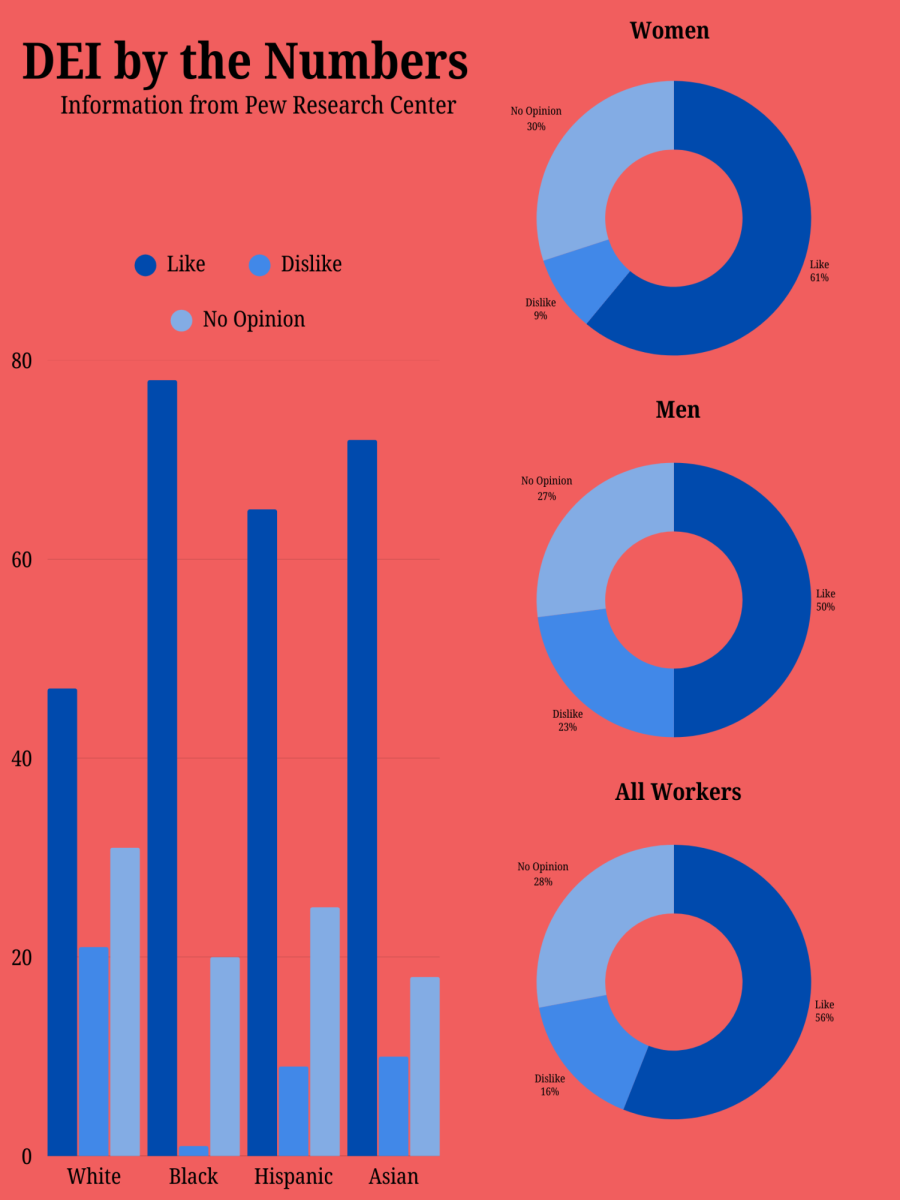Within the LGBT+ community there is a wide range of adjectives to describe someone’s gender identity or sexual orientation. Most people go their entire lives not questioning their personal genders or pronouns, but for others it gets a bit more complicated.
“In elementary and middle school I was the person who was like ‘I’m not like other girls’,” junior Lee G.* said. “Then I was like, ‘maybe it’s because I’m not a girl.’”
G. identifies as non-binary, or not identifying as the male or female gender. People who are non-binary often use they/them pronouns or fluctuate between she and he pronouns depending on that person’s individual preferences.
“I think as a little kid I was always wanting to be like Mulan,” G. said. “She didn’t have to be a girl and I don’t want to either. I want to be an in between things.”
G. realized that they were non-binary in about the 8th grade, but has always felt as though they were different.
“I struggled a ton as a middle schooler just trying to figure out how I felt,” G. said. “In the small school I used to go to, nobody was out, being gay or trans was taboo.”
In school, ordinary things such as using the bathroom or changing in the locker rooms can become a struggle for a person who is struggling with their gender identity.
“I used to be really uncomfortable with my chest so I avoided locker rooms and running at all costs,” G. said.
The internet provides people with connections to others that they would otherwise not be able to talk or connect with, and allows communities to form based on a common variable, such as the LGBT community.
“Until I discovered the internet I was pretty lonely and just confused,” G. said. “For a while I just assumed that I was just going to die alone.”
Through YouTube, Tumblr and other social media platforms, G. was able to connect with the LGBT community. G.’s connection with like-minded persons has also translated to school life with their involvement in Gay-Straight Alliance.
“Parkway Central is a really accepting environment, so I feel that I can be myself and be accepted and loved,” G. said.
Like G., freshman Lee Foust also identifies as non-binary, or gender neutral, but has stopped attending GSA meetings since they were involved with the musical.
“I don’t really feel super traditionally masculine or feminine,” Foust said. “Not in a features sense but just in a grey area. I never really feel strongly one way or another.”
Foust began to realize they were non-binary in 7th grade through the social media platform Tumblr while searching through different tags.
“My views on gender are a bit different than other people at this school,” Foust said. “I don’t care, so I don’t push [my beliefs] at people and I don’t get angry. If someone’s not comfortable with it I just don’t bring it up.”
When choosing to go by Lee, Foust took the last part of their birth name, -ley. However, Foust still goes by the birth-name around parents and family.
“Since I live in a pretty socially liberal part of the country and world, things haven’t felt much different,” Foust said. “People are generally very accepting around this area, and those that aren’t I don’t take too personally since it is their personal beliefs and not my concern.”
While G. and Foust identify as non-binary, others such as senior Jeremy Fink identify as transgender. Fink was born with female sex organs but identifies as male.
“I started taking testosterone around November, the day before Thanksgiving,” Fink said. “I was so thankful. I’ve started growing facial hair and my voice has gotten deeper.”
Fink began to identify as other than female in high school, but the process of identifying as transgender was slower.
“I was very gradual and hesitant,” Fink said. “Then I went through junior year, a tough year where I defined what I was and figured it out.”
Fink came out to friends and family that year, and came out to his mother about a year ago.
“I wrote her a letter,” Fink said. “She’s done a lot to try to educate herself about it, but she still doesn’t use Jeremy or he/him pronouns. It’s a lot for her and my stepdad.”
Fink came out to teachers by sending them an email, but has not come out at work.
“When it comes to other people, especially strangers, I worry about it; just not as much because I physically pass since I transitioned,” Fink said. “But there’s always a fear, anxiety, disgusting feelings. Sometimes I approach it, sometimes I don’t.”
Fink’s therapist describes the coming out process like having a baby; it takes time and is full of emotions.
“I just told my grandma,” Fink said. “It’s scary having to go out and say that, but part of it is relieving when there’s nothing bad.”
Fink must take a self-administered testosterone shot every Wednesday and uses he/him pronouns.
“I wasn’t happy before,” Fink said. “I am much better off now having gone through all of this.”
*Name has been changed to protect the identity of the individual






